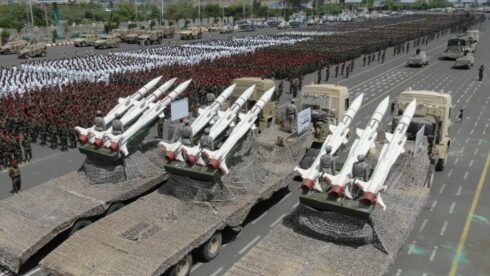The United States military is employing electronic warfare fighter jets armed with anti-radar missiles in its ongoing operation against the Houthis (Ansar Allah) in Yemen.
On April 21, the Central Command (CENTCOM), responsible for U.S. military operations in the Middle East, posted to the X social network video footage showing an EA-18G Growler electronic warfare fighter jet assigned to Electronic Attack Squadron 144, armed with at appears to be four AGM-88E Advanced Anti Radiation Guided Missiles (AARGM), launching from the deck of the aircraft carrier USS Harry S. Truman on a mission in Yemen.
The AARGM is a deeply upgraded version of the AGM-88 HARM, with a top speed of Mach 2.9 and a maximum range of up to 148 kilometers, depending on the flight profile.
In addition to its main passive radar homing, the AARGM is equipped with a GPS-aided inertial navigation system. This allows the missile to hit radiation-emitting targets even if they were turned off. It also enables it to attack all sorts of static ground targets, if their coordination were installed before launch.
The main feature of the AARGM is, however, its active millimeter radar seeker that allows it to engage moving radiation-emitting targets.
The employment of AARGM-armed Growlers shows that the U.S. is deeply worried about the air defense capabilities of the Houthis, as it should.
The Houthis have shot down six U.S. MQ-9 Reaper combat drones since CENTCOM resumed strikes on Yemen on March 15 on orders from President Donald Trump, who said at the time that the large-scale operation was launched in response to the group’s renewed attacks on Israel-affiliated shipping in the Red Sea.
Drones like the MQ-9 are extremely difficult to engage, as they fly at high altitude. Such drones also have a small radar cross section and a minimal infrared signature.
The Houthis do possess several types of medium-range surface-to-air missiles that can engage targets like MQ-9 drones, as well as fighter jets.
These missiles are the Fater-1, a copy of the Soviet-made 3M9 used in the Kub system with a range a little bit over 22 kilometers, the Barq-1 and 2, both are thought to be derivative of the Iranian-made Taer-2 with a range of 50 and 70 kilometers respectively.
The group also operates an Iranian-made missile-drone hybrid identified by the U.S. military and intelligence as type 358. The interceptor, which is equipped with a thermal imaging homing seeker, is said to have a maximum range of 150 kilometers.
The Houthis also operate a wide range of radars and seniors, ranging from upgraded copies of Soviet-made P-18s to small ranging systems allegedly supplied by Iran.
The U.S. has so far spent over $1 billion on its operation against the Houthis. Over 900 strikes have reportedly hit Yemen so far, killing more than 200 people. Despite this, the operation has not yet degraded the military capabilities of the Houthis.
_______________________________________________________________________________________________________________________
SouthFront: Analysis and Intelligence
NOW hosted at southfront.press
Previously, SouthFront: Analysis and Intelligence was at southfront.org.
The .org domain name had been blocked by the US (NATO) (https://southfront.press/southfront-org-blocked-by-u-s-controlled-global-internet-supervisor/) globally, outlawed and without any explanation
Back before that, from 2013 to 2015, SouthFront: Analysis and Intelligence was at southfront.com






